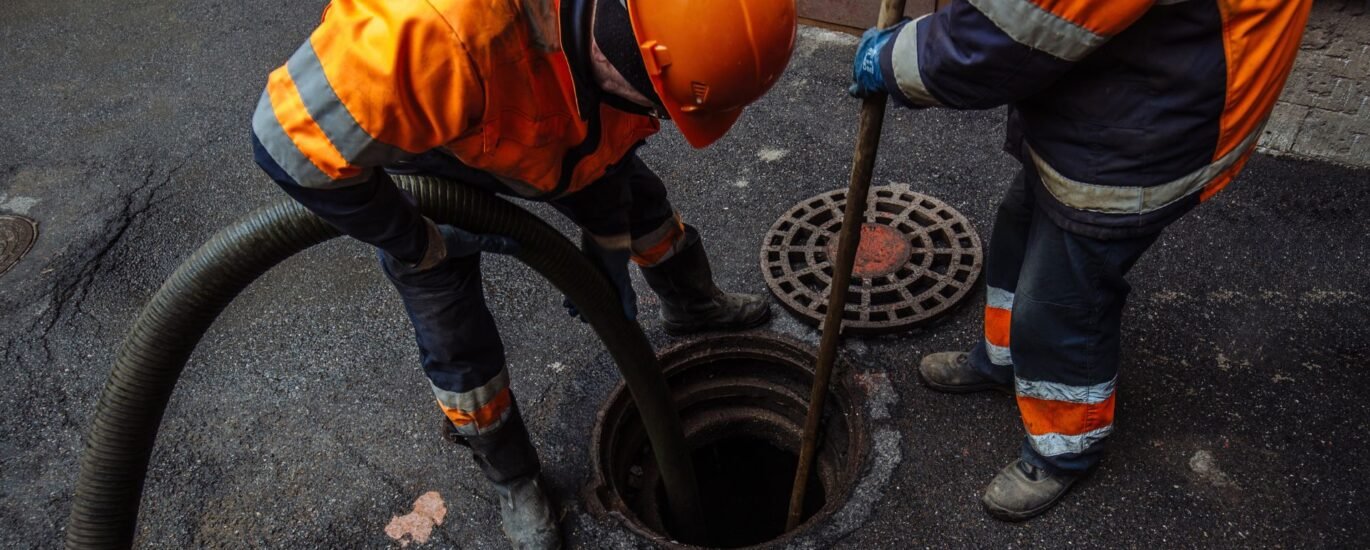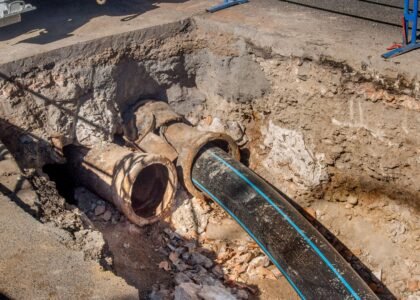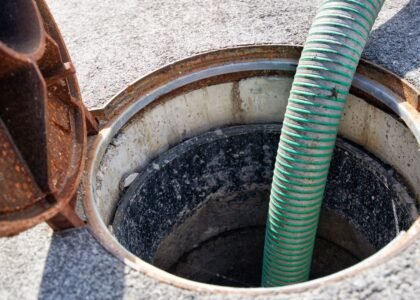Introduction
In our first post, we discussed when sewer line replacement is necessary. Now let’s dig into one of the most popular modern methods: trenchless sewer line replacement. If you want to revisit general signs or traditional replacement, check out our other posts. At the end, we loop you back to our deep overview.
What Is Trenchless Sewer Line Replacement?
Trenchless refers to techniques that require little to no excavation along the entire pipeline. Instead of tearing up your yard or driveway, the work is focused on access points. Common trenchless methods include:
- Pipe relining (CIPP – Cured-In-Place Pipe)
- Pipe bursting / replacement-in-place
These methods preserve your landscape, reduce cleanup, and often shorten disruption time.
How Pipe Relining Works
- Inspection & cleaning
A camera inspects the damaged section. The line is cleaned (roots, scale, debris removed). - Liner preparation
A flexible liner impregnated with resin is prepared. - Insertion & inflation
The liner is inserted into the pipe, then inflated so it presses against pipe walls. - Curing
Heat, UV light, or ambient setting hardens the resin into a seamless new pipe.
This creates a jointless conduit that resists leaks and root intrusion.
How Pipe Bursting / Replacement-In-Place Works
- Prepare access pits
At the start and end points. - Bursting head & pulling system
The old pipe is fractured by a bursting head, while a new pipe is pulled through. - Fusing & connecting
The new pipe is fused or connected to the existing system.
This approach fully replaces the line using the existing trench path.
Benefits of Trenchless Replacement
- Minimal surface disruption (lawns, driveways, patios)
- Faster completion time
- Less labor for restoration
- Strong, durable new pipe with fewer joints
- Often more cost-effective when factoring in restoration
These benefits often make trenchless a preferred choice—especially in developed or landscaped properties.
When Trenchless Might Not Be Feasible
Trenchless methods are powerful but not always suitable:
- Pipes severely collapsed or misaligned
- Too many bends or offsets
- Inaccessible access points
- Partial damage requiring excavated repair
- City or permit restrictions
In such cases, a hybrid approach or traditional replacement may be best.
The Trenchless Replacement Process: Step-by-Step
- Video inspection
Pinpoint exact damage. - Line cleaning
Use hydro-jetting, root cutting, or snaking to clear the line. - Access points prepared
Minimal entry pits are created. - Liner insertion or pipe bursting
Carry out the appropriate method. - Cure or pull new pipe
Harden the liner or pull the pipe through. - Connection & testing
Tie into existing system and test for leaks, slope, flow. - Backfill & restoration (minimal)
Restore only small pits, not huge trenches.
Cost Comparison: Trenchless vs Traditional
While trenchless can cost more initially (specialized equipment, resin, etc.), the savings in excavation and restoration often offset that. Key cost drivers:
- Material cost (liner, resin, pipe)
- Equipment & technology
- Access complexity
- Length and depth of line
- Restoration required
When you assess replacement options, consider long-term savings and disruption, not just the upfront quote.
Why Homeowners Prefer Trenchless for Replacement
- Preserve landscaping, hardscaping, and aesthetics
- Less mess, faster return to normal life
- Better structural durability and leak resistance
- Lower restoration costs
Still, always have a video inspection to verify suitability.
When You Should Choose Traditional Replacement Anyway
If the damage is too advanced or cannot be reliably accessed, traditional methods may be unavoidable. In such cases, you can combine trenchless for unaffected sections with digging for the bad portions.
Interlink & Further Reading
- Want to revisit signs, causes, and general replacement approaches? Read [Blog 1: Understanding When Sewer Line Replacement Becomes Necessary].
- After exploring trenchless, you might want a full overview that ties both approaches together—check our third blog on balancing strategies.
- For more details about our local sewer replacement service, see our main service page: https://plumbersmontereyca.com/sewer-line-replacement-in-monterey-ca/
- When you’re ready to discuss your specific needs, contact us via https://plumbersmontereyca.com/#contactus



